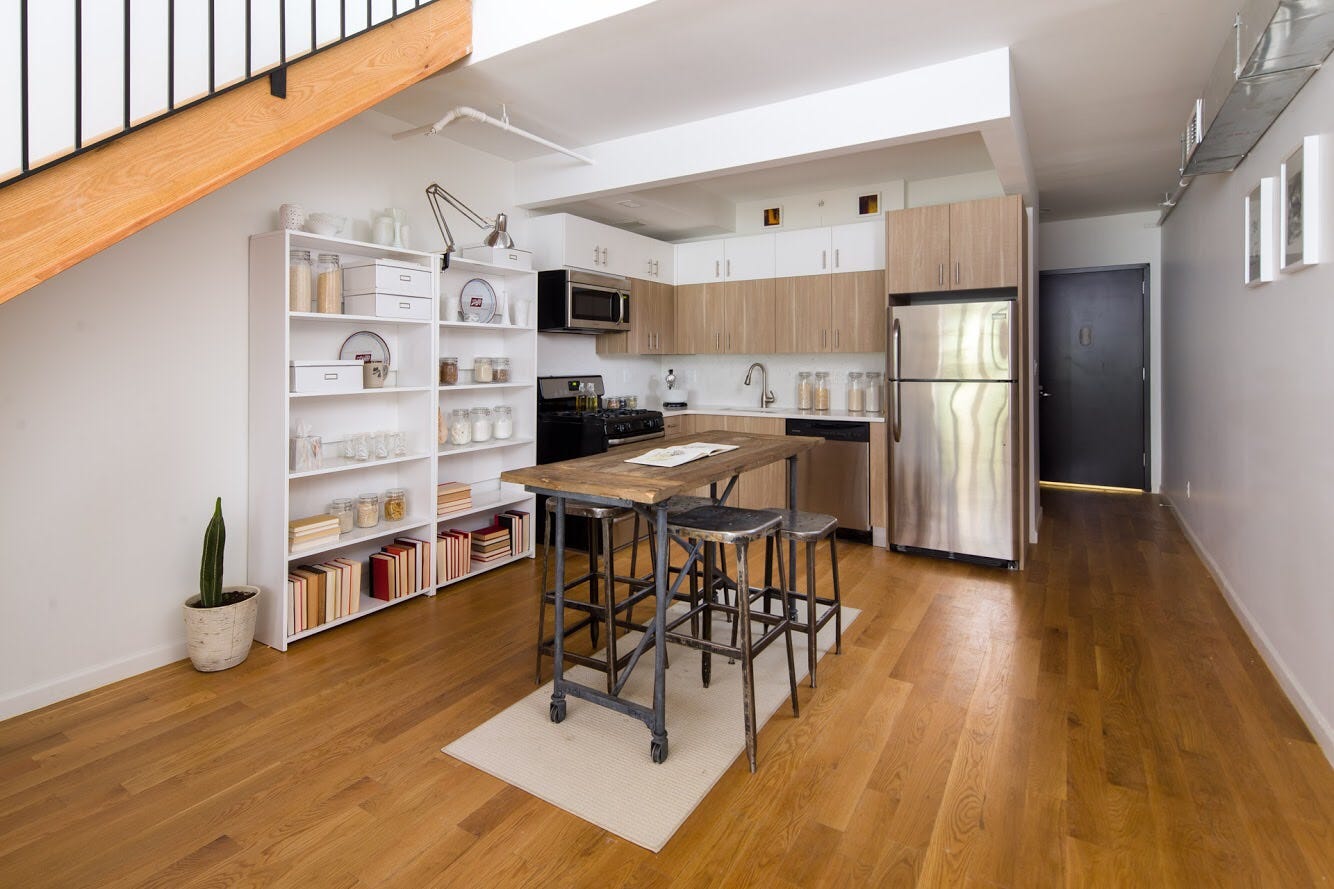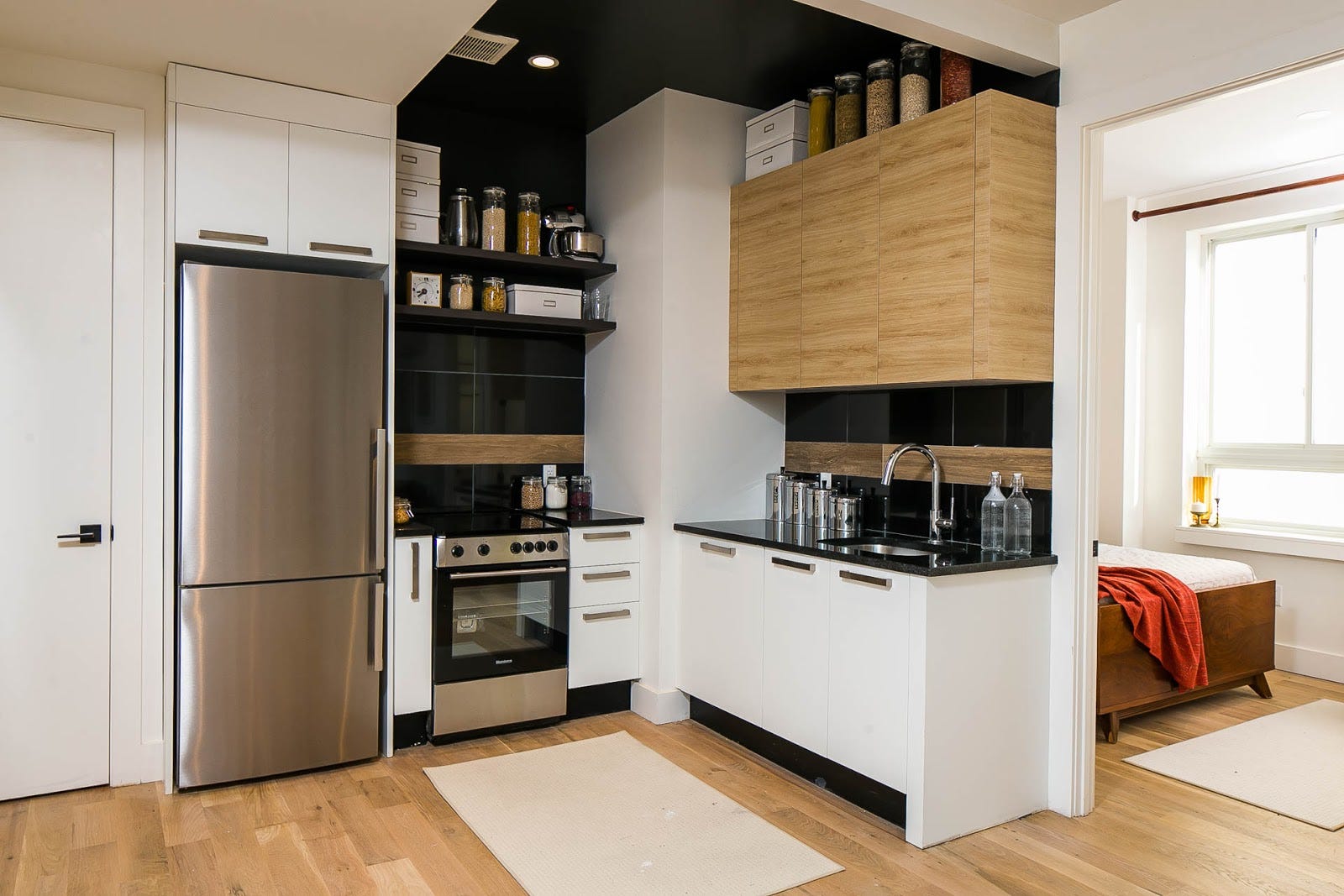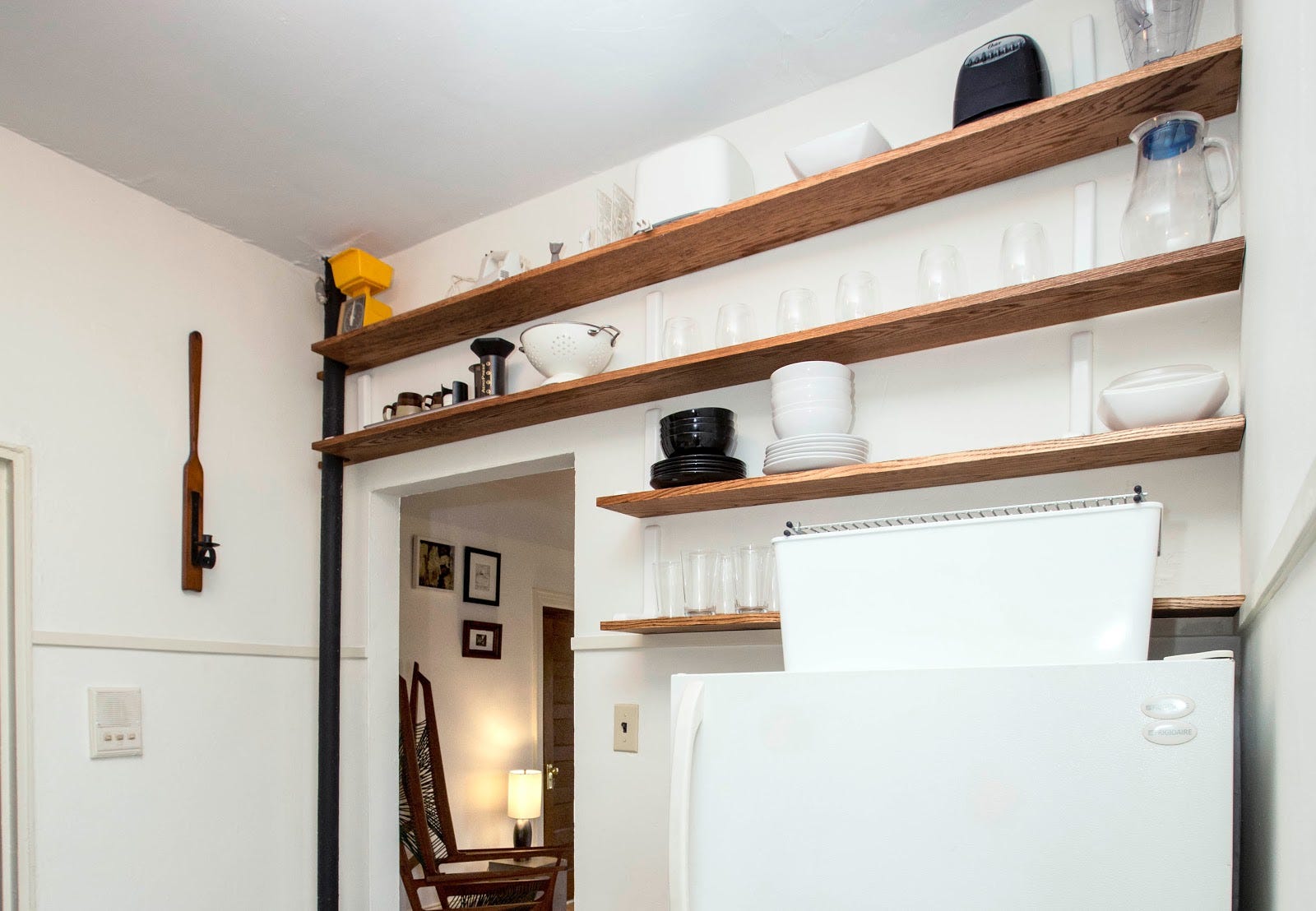New York City is home to some of the world’s greatest chefs and some of the world’s tiniest kitchens. When you factor in those two things, you can probably imagine that it’s also full of a lot of “making it work.” As a Brooklyn-based real estate agent, I’m often met with disappointed looks when showing kitchens, especially from those who are new to the city. There’s no getting around it; kitchens in New York apartments are often small. But that doesn’t mean you have to succumb to take-out culture or pass on a dream apartment that’s lacking kitchen space.
I sat down with Jordan Ringdahl, Nooklyn’s Showroom Director, to get some advice on how to make the most of a small kitchen, and we came up with the following tips to consider.
Create your own separation. An eat-in kitchen isn’t a sure thing in your new apartment. But if everything else feels right, don’t pass on the perfect space just because you feel that your kitchen is practically on top of your living space. You can easily create the illusion of a separate kitchen. An island or a kitchen cart is an amazing way to separate the area from your living room, and it gives you more counter and storage space.
Be a magician with your furniture. Think, “Now you see it, now you don’t.” If you’re concerned about entertaining guests but usually eat alone, get a table with folding leaves. If you love to cook, but don’t necessarily need a chef’s kitchen on the daily, get an island that rolls out of your way when you don’t need the extra counter space. You can even find kitchen carts that fold up for easy storage.
Keep the flare to a minimum. Jordan explains, “Jars for food can be decoration in itself. Find stylish things that are functional. A bottle of oil can actually be nice looking.” In other words, decorate your kitchen with actual kitchen items. Represent your style with your dishes, containers, kitchen linens, etc.
Don’t store beyond your needs. If you don’t bake pies, you don’t need a pie dish. Sure, it may come in handy one day, but let’s face it, it probably won’t. Keep your kitchen accessories minimal, and only hold on to what you’ll actually use. It’s easy to accumulate a lot of things over the years, but making a periodic purge clears up room for things you use regularly, including space. Make the things you use the most accessible, and put the things you use the least but can’t seem to let go of on the highest shelf or the very back of the cabinet.
Stay organized with containers. Think about your cabinet space as a game of Tetris. It will all fit if you maneuver it correctly. Sticking bags on top of boxes on top of bottles in a small kitchen equals an avalanche every time you open a door. Consolidating and organizing your dry goods into storage containers ends up saving you space and time. No need to rearrange everything to get one item.
Accessorize the inside of your cabinets to make them more functional. Jordan highly recommends
Rev-A-Shelf, an add-on shelving system that allows you to pull out your shelves for better access. “I love these and use them at home. This is the best utilization of space for lower cabinets, instead of piling up pots and pans like most people do. They’re also great for trash and recycling bins,” he says.
Take advantage of unused wall space, even in hard to reach places. Jordan suggests, “Use the space above your cabinets and refrigerator for storage.” The most underutilized space in the kitchen is up high. You can easily store things you don’t use often on top of cabinets and even install additional shelving. Hooks can be your best friend if you don’t have every much drawer space for cooking utensils or pots and pans. The area above your sink or the awkward stretch of wall next to a refrigerator can easily make up for a lack of storage.
See more on making the most of small spaces here. Have any follow-up questions? Contact Adele here, tweet us @nooklyn or reach out to us on Facebook!
Photo credits: 1) Daniel Webb 2-3) Nicholas Doyle 4) Benny Crown courtesy of Jordan Ringdahl


